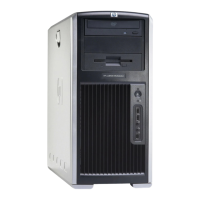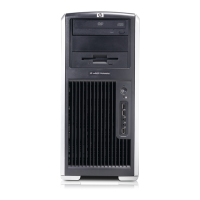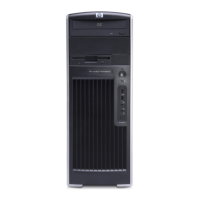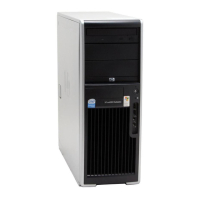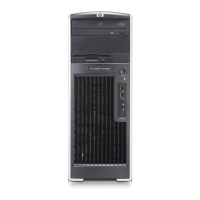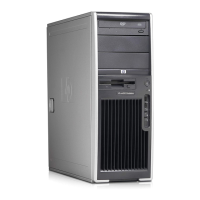A diagnostic hard drive self test. It scans critical physical components and every sector of the hard
drive for physical faults and then reports any faults to the user.
Running independently of the operating system, it can be accessed through the computer's setup
procedure. It produces an evaluation on whether the hard drive is the source of the problem and
needs to be replaced.
The system expands on the Self-Monitoring, Analysis, and Reporting Technology (SMART), a continuously
running systems diagnostic that alerts the user to certain types of failures.
DPS Access through F10 Setup during Boot (F10 diagnostic access not available with SCSI drives)
SMART Technology
(Self-monitoring, analysis
and reporting technology -
Windows XP only)
Allows hard drives to monitor their own health and to raise flags if imminent failures were predicted
Predicts failures before they occur. Tracks fault prediction and failure indication parameters such as re-
allocated sector count, spin retry count, calibration retry count.
By avoiding actual hard drive failures, SMART hard drives act as "insurance" against unplanned user
downtime and potential data loss from hard drive failure.
SMART I - Drive Failure Prediction
SMART II - Off-Line Data Collection
SMART III - Off-Line Read Scanning with Defect Reallocation
Security Features
Access Panel Key Lock
(standard)
Prevents removal of the access panel and all internal components including optical and floppy drives
Padlock
(optional)
Prevents entire system theft and discourages access panel removal. 7mm diameter padlock loop at rear of
system.
Kensington Cable Lock
(optional)
Prevents entire system theft only. 3mm x 7mm slot at rear of system.
Universal chassis clamp
lock
(optional)
The version without a cable discourages access panel removal and prevents theft of IO devices. The
version with a cable additionally prevents entire system theft and allows multiple systems to be secured
with a single cable.
Serviceability Features of System
Access panel
Tool-less, one-handed
Optical drives
Tool-less
Floppy drive
Drive requires screws to attach to bracket, once attached to mounting bracket, it latches toollessly to
chassis
Hard drives
Tool-less
Expansion cards
Tool-less
Green user touch points
Yes, on tool-free internal chassis mechanisms
Color-coordinated cables
and connectors
Yes
Memory
Tool-less, can be upgraded without removing any internal components
CPUs
Tool-less, can be upgraded without removing any internal components
Chassis fan removal
Tool-less
Power supply diagnostic
LED
Yes, dual function: AC OK & power OK
Power Button
Yes, ACPI multi-function
Power LED
Yes, dual color LED indicates normal operation and faults.
QuickSpecs
HP xw8400 Workstation
Technical Specifications
DA - 12522 North America — Version 28 — February 22, 2008
Page 28

